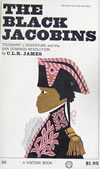Posted December 21, 2009
I became interested in history from the “bottom-up” when I was in high school. Books like Howard Zinn’s People’s History of the United States introduced me to a new world where ordinary peoples’ lives and struggles were central to the historical process, not relegated to its margins. I remember devouring book after book of “people’s history” and—though I didn’t understand it as such then—the history of the global Left. I regularly visited the used bookstores in my neighborhood, snagging paperbacks on everyone from Malcolm X to Gandhi and everything from the Cuban Revolution to the civil rights movement. This reading, combined with my introduction to Marxism around the same time, was foundational for me. Learning about the powerful, dynamic history of past struggle gave me confidence for the present and future.

When I arrived at college, I learned more about where this “bottom-up” history came from. Prior to the 1960s, most historical scholarship focused on institutions, structures and “Great Men.” Many have called this history from the “top-down.” There were important exceptions that foreshadowed the later explosion of bottom-up history. These included C.L.R. James’ Black Jacobins and W.E.B. DuBois’ Black Reconstruction, both penned in the 1930s. These works gave voice to slaves, ex-slaves and workers. By and large, however, they were anomalies. Both works garnered little attention from the history profession.
 The 1960s catalyzed a shift in historical inquiry that led to what we today call “bottom-up” history. The period’s radical spirit, and the example of mass movements composed of ordinary people, motivated a new generation of historians to look at the past with fresh eyes. Historians like Herbert Gutman and David Montgomery discovered a hidden history of the American working class, while scholars like Eugene Genovese did the same with slave era and post-slavery African-Americans. Perhaps the most influential of this new wave of historians was Edward Palmer Thompson, whose monumental The Making of the English Working Class set the tone and agenda for a generation of historians. This new social and cultural history took the world views of working people seriously. It viewed working-class cultures as central mediators of working-class consciousness. It focused on “agency” and uncovered vibrant traditions of resistance. Cumulatively, it made an irreversible contribution to the way history is told. Never again would historians be able to dismiss, ignore or marginalize the history of ordinary people and their struggles.
The 1960s catalyzed a shift in historical inquiry that led to what we today call “bottom-up” history. The period’s radical spirit, and the example of mass movements composed of ordinary people, motivated a new generation of historians to look at the past with fresh eyes. Historians like Herbert Gutman and David Montgomery discovered a hidden history of the American working class, while scholars like Eugene Genovese did the same with slave era and post-slavery African-Americans. Perhaps the most influential of this new wave of historians was Edward Palmer Thompson, whose monumental The Making of the English Working Class set the tone and agenda for a generation of historians. This new social and cultural history took the world views of working people seriously. It viewed working-class cultures as central mediators of working-class consciousness. It focused on “agency” and uncovered vibrant traditions of resistance. Cumulatively, it made an irreversible contribution to the way history is told. Never again would historians be able to dismiss, ignore or marginalize the history of ordinary people and their struggles.
While bottom-up history shaped my basic outlook, I started questioning its value shortly after the 2004 election. There were two reasons for this. First, it seemed like the search for “agency” of subordinate peoples had reached absurd lengths. Historians were discovering “resistance” in the most trivial acts. Reading a certain dime novel or embroidering a certain pattern onto a doily, when processed through the academic assembly line, became an act of “resistance.” To be sure, even the most far-fetched works usually provided some sort of corrective and/or highlighted truths that had previously eluded historians’ eyes. It seemed, however, that almost anything any oppressed or working person ever did was some form of resistance.
This leads me to my second reason for growing disenchanted with bottom-up history. So much of it had been done, and taken to such lengths, that a simple fact was overlooked: the history of working and oppressed people since the 1960s had arguably been a history of defeat. Working peoples’ power and agency had been severely curtailed. The neoliberal corporate offensive had decimated the working class. African Americans still suffered from immense inequality and racism. Immigrants were being demonized. The degradation of women was still widely accepted in our culture.
 Not enough attention had been given to this reality (at least in the discipline of history—other disciplines, such as sociology, paid much greater attention to these matters). In short, it seemed that we did not need another tale of heroic resistance and hidden agency of oppressed people. Rather, we needed to better understand the causes of their defeat. While not discarding the gains of the new social and cultural history, we needed a return to old fashioned, top-down, structural history.
Not enough attention had been given to this reality (at least in the discipline of history—other disciplines, such as sociology, paid much greater attention to these matters). In short, it seemed that we did not need another tale of heroic resistance and hidden agency of oppressed people. Rather, we needed to better understand the causes of their defeat. While not discarding the gains of the new social and cultural history, we needed a return to old fashioned, top-down, structural history.
This belief stayed with me for a while. During this time, I didn’t think too highly of bottom-up social and cultural history. However, the economic crisis and the general malaise on the American Left has brought me back to bottom-up history and made me appreciate its value.
I think the main problem of the Left is not insufficient knowledge or analysis of capitalism and its manifestations, but one of organizing. The Left is not organizing well enough and not developing a real base among the American people. Without a base, nothing we do can have that much real effect. Different factors—some beyond our control—go into winning over the mass base we so badly need. But one thing we need to do is reach people where they are at. Movements don’t magically sprout from ideas, but from actual human beings.
Bottom-up history instills a respect for and attention to people’s lives, culture and traditions. It shows how these things, under the right circumstances, provide seeds for mass resistance. It shows how new political cultures based on left ideas and values can emerge and become hegemonic. It shows how resistance and radical consciousness can arise from the very fabric of ordinary peoples’ lives and cultures.
Forrest Hylton and Sinclair Thomas’ Revolutionary Horizons: Past and Present in Bolivian Politics is an excellent example of the kind of bottom-up history we need. The authors situate the neoliberal era Bolivian radical mass movement in the context of centuries-old aspirations, traditions, cultures and dynamics. They show how popular memory and imagination has fed resistance, how the Bolivian people created a “usable history” that facilitated their own struggles. They show how organizers have consciously tapped into deep social and cultural traditions to mobilize and sustain movements. At the same time, Hylton and Sinclair weaved this cultural history with sharp analysis of the larger structural forces which shaped the patterns of Bolivian Indian and worker resistance.
(Revolutionary Horizons reminds me of something I observed when I visited Venezuela in 2005. The image of Simon Bolivar was ubiquitous, and Venezuelans’ use of his image and memory helped keep morale high and provide legitimacy for their current movement. His memory, constructed through the popular imagination in the context of struggle, has been vital to the mobilizing power of the Bolivarian Revolution.)
In their classic book Poor Peoples’ Movements (which, incidentally, places enormous emphasis on structural analysis), Francis Fox Piven and Richard A. Cloward write: “Opportunities for defiance are not created by analyses of power structures. If there is a genius in organizing, it is the capacity to sense what is possible for people to do under given conditions, and then to help them do it.” Analysis of “power structures” is vital work, and we have no shortage of fantastic left analysis of capitalism and its manifestations. This work will and should be kept up, helping us to understand our terrain and shape strategy and tactics. But we also need to keep producing and reading quality history that takes peoples’ cultures and worldviews seriously, that seeks to understand the actual human history and dynamics that go into sprouting resistance and organization. We will be better organizers and strategic thinkers if this sensibility is cultivated within us. And the main problem of the Left is learning how to organize effectively, both in terms of broader vision and day-to-day strategy and tactics.
